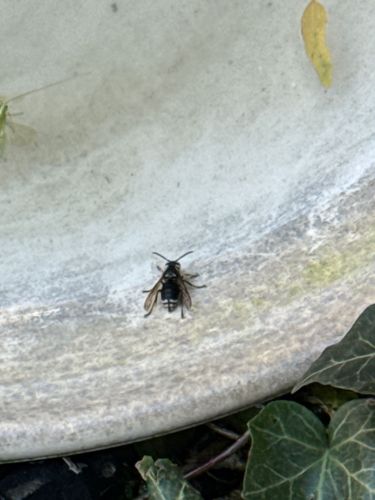Yellowjacket
Scientific Name: Vespula spp. or Dolichovespula spp.
Order & Family: Hymenoptera, Vespidae
Size: Typically 10-16 mm (0.4-0.6 inches) in length for workers, with queens being slightly larger.

Natural Habitat
Yellowjackets can be found in various habitats, including forests, woodlands, grasslands, and especially in urban and suburban areas where human activity provides abundant food sources and nesting sites.
Diet & Feeding
Adult yellowjackets feed on nectars, fruit juices, and other sugary substances. Larvae are fed protein sources, primarily chewed-up insects and scavenged meat. As such, adults hunt a variety of insects, including flies, caterpillars, and spiders, and also scavenge from human food and garbage.
Behavior Patterns
Yellowjackets are social insects that live in colonies, typically building nests underground in abandoned rodent burrows, or in cavities in trees, walls, or even attics. They are highly active during the day, foraging for food for the colony. They can become aggressive, especially when their nest is disturbed or when food sources are scarce in late summer/early fall. They are known for their painful stings and can sting multiple times.
Risks & Benefits
Potential risks include painful stings, which can cause allergic reactions in sensitive individuals, ranging from localized swelling to life-threatening anaphylaxis. They are considered pests due to their aggressive behavior and tendency to scavenge human food. However, yellowjackets are also beneficial as predators, helping to control populations of pest insects like flies and caterpillars, which can damage crops and gardens.
Identified on: 8/9/2025